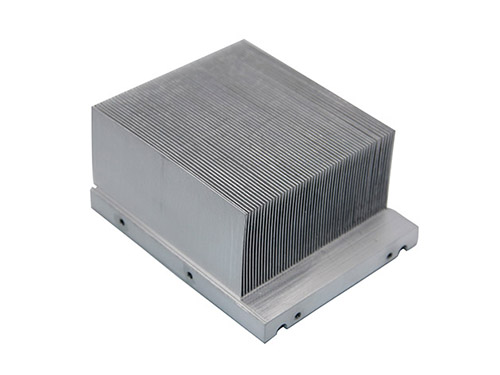
Source manufacturer · Customized on demand · Complete specifications · Quality assurance
service hotline400-886-9109

The radiator is a component that increases the flow of heat away from the thermal equipment. It accomplishes this task by increasing the working surface area of the equipment and the amount of cryogenic fluid that moves over the entire surface area. According to the configuration of each device, we found a variety of heat dissipation designs, designs and final functions. Each radiator is valuable in applications that may have the following changes:
How does the radiator work?
The heat sink works by removing heat from key components. Almost all radiators complete this task through four basic steps:
1. The source generates heat. The heat source can be any system that generates heat and needs to be removed for normal operation, such as:
-mechanical
-electric
-Chemical
- nuclear
-Solar energy
- friction
2. The heat is transferred away from the source. Heat pipes can also help with this process, but we will cover these components separately. In applications that directly contact the radiator, heat will enter the radiator through natural conduction and be removed from the heat source. The thermal conductivity of the heat sink material directly affects the process. This is why the most common materials in the structure of heat sinks are materials with high thermal conductivity, such as copper and aluminum.
3. The heat is distributed throughout the radiator. The heat will naturally pass through the heat sink by natural conduction that traverses the entire thermal gradient in a high-to-low temperature environment. This ultimately means that the thermal profile of the radiator will be inconsistent. In this way, the radiator usually gets hot toward the source and cools toward the end of the radiator.
4. The heat is removed from the radiator. This process depends on the temperature gradient of the radiator and its working fluid, the most common being air or non-conductive liquid. The working fluid passes through the warm radiator surface and uses thermal diffusion and convection to transfer heat from the surface to the surrounding environment. This stage again relies on the temperature gradient to remove heat from the heat sink. Therefore, if the ambient temperature is not lower than the heat sink, convection and subsequent heat dissipation will not occur. In this step, the total surface area of the heat sink also becomes the most advantageous. The large surface area provides increased area for thermal diffusion and convection.
Active radiator and passive radiator
Heat sinks are most commonly used in active, passive or hybrid configurations.
Passive radiators rely on natural convection, which means that only the buoyancy of hot air will cause the airflow generated by the entire radiator system. These systems are advantageous because they do not require a secondary power supply or control system to dissipate heat from the system. However, passive radiators are not as efficient as active radiators in transferring heat from the system.
Active radiators use forced air to increase the flow of fluid through high-temperature areas. Forced air is usually generated by the movement of fans, blowers, and even the entire object. For example, a motorcycle engine is cooled by air passing along the cooling fins designed as the engine. An example of a fan generating forced air on a radiator is when the computer heats up, the fan in a personal computer turns on. The fan forces the air to flow through the radiator, thereby causing more unheated air to move on the surface of the radiator, thereby increasing the total thermal gradient of the entire radiator system and allowing more heat to escape the entire system.
Hybrid radiators combine certain aspects of passive and active radiators. These configurations are less common, and they usually rely on the control system to cool the system based on temperature requirements. When the system is running at a lower temperature, the forced air source will not work, but only passively cool the system. Once the heat source reaches a higher temperature, the active cooling mechanism starts to work to increase the cooling capacity of the radiator system


follow
Market service department:+86-137-1246-1610
consultation